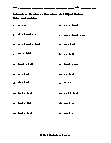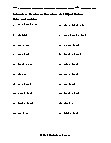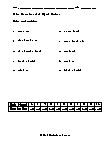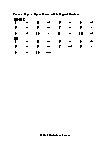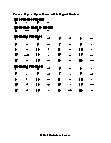Operations with Signed Numbers Worksheets
What Are the Rules for Operations with Negative Numbers? Fractions, whole numbers, and real numbers can all be positive and negative. Any number greater than zero is known as the positive number and numbers less than zero, are known as the negative numbers. You can perform every mathematical operation on negative and positive numbers or even by combining both the numbers. Addition - When adding a negative number with another negative number, we add them and give them the same sign. For example, when we add (-4) + (-2) | - 4 -2 = -6 . However, when adding a positive and negative number we perform subtraction and assign the sign of the greater number. For example, (-4) + 2 = (-2). Subtraction - For subtraction, we switch the sign of the number to it is opposite sign and add or subtract them. For instance, when subtracting a negative number from a negative, like -5 - -2, change negative 2 to positive 2 and the add the numbers. This will give you -5 + 2= (-3). Multiplication - When multiplying positive with positive or negative with negative, we do not change the sign. However, when we multiply numbers with opposite numbers (positive with negative), we always assign the negative sign. Division - When we divide two positive numbers, we keep the positive sign. And when we divide negative with a positive number or positive by a negative number, we always put the negative sign.
-
Intermediate Lesson
Explores how to tackle multiplication and division with signed numbers.
View worksheet -
Independent Practice 1
Contains 20 Operations with Signed Numbers problems. The answers can be found below.
View worksheet -
Homework Worksheet
Operations with Signed Numbers problems for students to work on at home. Example problems are provided and explained.
View worksheet -
Topic Quiz
10 Operations with Signed Numbers problems. A math scoring matrix is included.
View worksheet
Fun Fact
Here are the first 100 decimal places
of Pi:
3.1459265358979323846264
338327950288419916939937
510582097494459230781640
62862089986280348253421170679.


